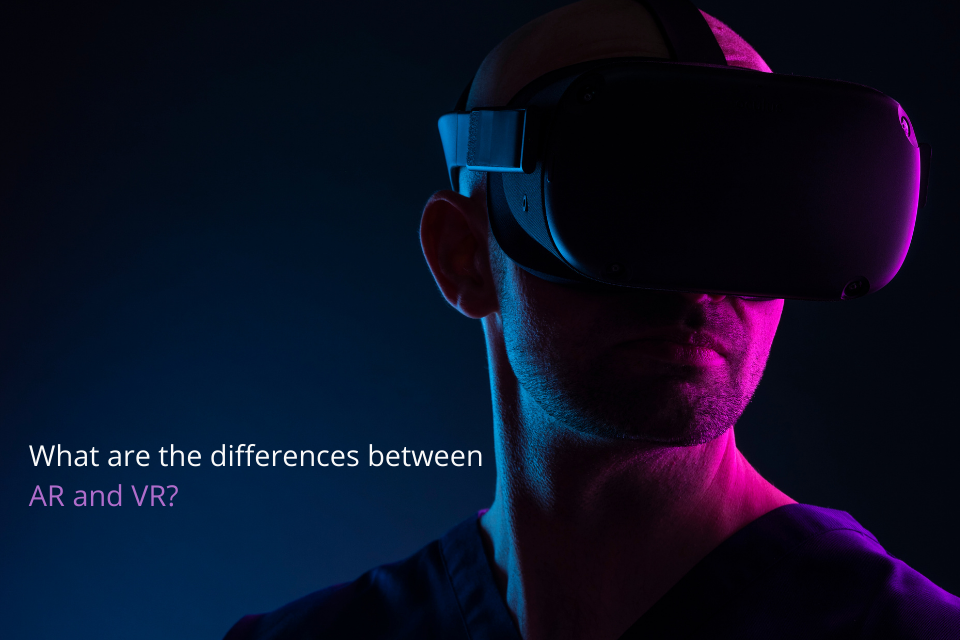What are the differences between AR and VR?

Immersive ‘reality’ technologies have grown in popularity over the past few years, and it’s likely that you’ll have come into contact with them in their various forms. Both augmented reality (AR) and virtual reality (VR) are types of experiential technology. This means they integrate virtual and real elements to immerse you in a situation that feels realistic. While they both use virtual technology to alter your environment, the extent to which you’re immersed is the clearest difference between them. We go over the differences between them below.
Augmented Reality (AR)
This experience is not fully immersive. Instead, augmented reality means digital information is added onto the real world. Images, text and other virtual objects are laid over our everyday surroundings using digital tools, augmenting the user’s experience – as the name suggests.
The devices used for this kind of technology include things like heads-up displays, smart lenses and AR glasses which are transparent and allow you to view your real environment. You can even enjoy AR on your smartphone, with perhaps the most famous example being Pokémon GO which took the world by storm a few years ago. Snapchat lenses can also alter or add elements to your photos or recordings.
However, the uses of AR go beyond just entertainment. Using this technology allows you to visualise digital representations of anything on top of your existing spaces, so retailers are able to help you decide how something will look in your home, for example. For travellers, AR can offer the opportunity to experience a self-guided tour. Using your phone, you could point the camera at an artefact or monument and learn more about its history.
Virtual Reality (VR)
To experience Virtual Reality technology, you wear a headset that completely blocks out your real surroundings, immersing you entirely in a computer-generated reality. Essentially, your vision is taken over and your brain senses that you’re elsewhere.
While the gaming and entertainment industries were early adopters of VR, its uses now span many different types of businesses in many sectors, such as engineering, the military, construction, and of course, healthcare and education. The virtual reality you experience may be a game, a video or a virtual space created for the interface of the platform. When you put on a VR headset, you replace your real world with a 3D and fully immersive virtual one.
Headsets will be connected to some kind of digital platform, app or gaming console that enable the experience for the user. Some interfaces require a proper computer, while others can be used through a smartphone or similar device. The Oculus Go does it all as a standalone VR headset. ‘Tethered’ VR headsets go a step further by tracking your motion by using outside sensors or cameras, so any movement you make is detected and feeds into your ‘virtual’ experience.
Businesses can harness this kind of technology to enhance operations and help train employees, as well as improve the customer experience. VR can be used to simulate any experience or setting, enabling realistic on-the-job training to happen anywhere and at any time.
How do they compare?
Both virtual and augmented realities are forms of Extended Reality (XR). The main difference between them is the level of immersion that the technology allows. VR puts the user in a fully immersive digital world that is outside of their real-life reality. AR, on the other hand, superimposes virtual objects onto a known, existing environment.
While VR requires a headset, AR can be used with smartphones or tablets, heads-up displays or AR glasses to overlay digital elements onto your real-life view. Essentially, VR replaces your reality and transports you virtually to a new environment, whereas AR adds digital elements to the world you’re already in.
